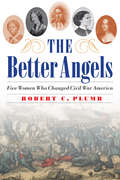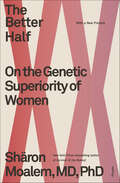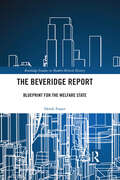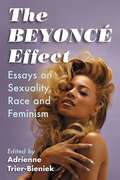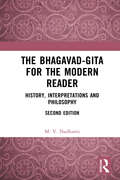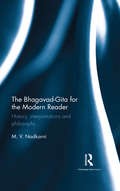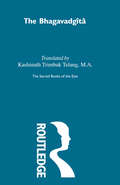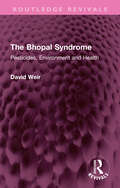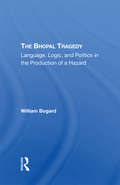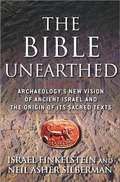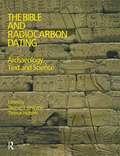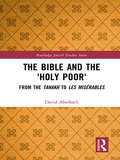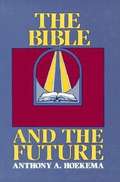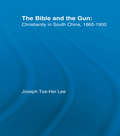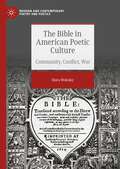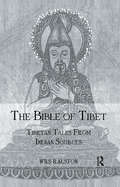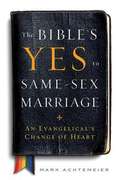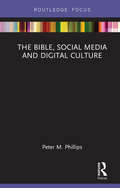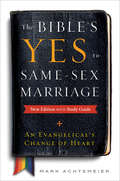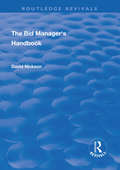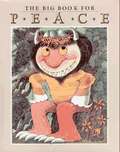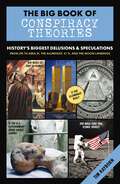- Table View
- List View
The Better Angels: Five Women Who Changed Civil War America
by Robert C. PlumbHarriet Tubman, Harriet Beecher Stowe, Clara Barton, Julia Ward Howe, and Sarah Josepha Hale came from backgrounds that ranged from abject enslavement to New York City&’s elite. Surmounting social and political obstacles, they emerged before and during the worst crisis in American history, the Civil War. Their actions became strands in a tapestry of courage, truth, and patriotism that influenced the lives of millions—and illuminated a new way forward for the nation. In this collective biography, Robert C. Plumb traces these five remarkable women&’s awakenings to analyze how their experiences shaped their responses to the challenges, disappointments, and joys they encountered on their missions. Here is Tubman, fearless conductor on the Underground Railroad, alongside Stowe, the author who awakened the nation to the evils of slavery. Barton led an effort to provide medical supplies for field hospitals, and Union soldiers sang Howe&’s &“Battle Hymn of the Republic&” on the march. And, amid national catastrophe, Hale&’s campaign to make Thanksgiving a national holiday moved North and South toward reconciliation.
The Better End: Surviving (and Dying) on Your Own Terms in Today's Modern Medical World
by Dan MorhaimDan Morhaim, a practicing physician and Maryland state legislator, guides readers through the medical and legal maze of end-of-life care. He details the care choices available to patients and explains why living wills and advance directives are a necessity for every American. He tells readers where to find free and readily available living wills and advance directives and why it is so important for everyone-young and old-to complete them. Dr. Morhaim helps readers keep decisions in their own hands and spare their families the uncertainty and trauma of guessing about their end-of-life wishes. With this book, he breaks down the barriers to a difficult but essential topic, helping readers to open this often avoided discussion with their loved ones and providing the information and guidance needed to ensure that deeply held values are reflected and honored.
The Better Half: On the Genetic Superiority of Women
by Shäron MoalemA Guardian Book of the WeekLonglisted for the PEN / E. O. Wilson Literary Science Writing AwardAn award-winning physician and scientist makes the game-changing case that genetic females are stronger than males at every stage of lifeHere are some facts: Women live longer than men. They have stronger immune systems. They're better at fighting cancer and surviving famine, and even see the world in a wider variety of colors. They are simply stronger than men at every stage of life. Why is this? And why are we taught the opposite?To find out, Dr. Sharon Moalem drew on his own medical experiences - treating premature babies in the neonatal intensive care unit; recruiting the elderly for neurogenetic studies; tending to HIV-positive orphans in Thailand - and tried to understand why in every instance men were consistently less likely to thrive. The answer, he discovered, lies in our genetics: two X chromosomes offer a powerful survival advantage.With clear, captivating prose that weaves together eye-opening research, case studies, diverse examples ranging from the behavior of honeybees to American pioneers, as well as experiences from his personal life and his own patients, Moalem explains why genetic females triumph over males when it comes to resiliency, intellect, stamina, immunity and much more. He also calls for a reconsideration of our male-centric, one-size-fits-all view of medical studies and even how we prescribe medications - a view that still sees women through the lens of men.Revolutionary and yet utterly convincing, The Better Half will make you see humanity and the survival of our species anew.
The Beveridge Report: Blueprint for the Welfare State (Routledge Studies in Modern British History)
by Derek FraserThis book provides the definitive account of the making of the 1942 Beveridge Report and its influence on wartime and post-war social policy. The Beveridge Report: Blueprint for the Welfare State aims to offer a definitive analysis of the famous document, so influential in the founding of the National Health Service and other bodies and which still resonates in current debates about "getting back to Beveridge" and a "Beveridge for the 21st Century". It is based on extensive research into the papers of the Beveridge Committee, official Government archives and the papers of contemporary politicians and groups. Published to coincide with the Report’s 80th anniversary, the book is treated as a case study in policy formulation during the 1940s. Key features of the book include The first systematic review and assessment of the work of the Beveridge committee and the evidence submitted to it Detailed analysis of the enthusiastic reception of the Report and the government’s lukewarm attitude A full survey of the detailed planning for welfare reform and Beveridge’s role when excluded from it An assessment of the influence of Beveridge upon the creation of the Welfare State by Attlee’s Labour Government This important text would be of interest to scholars of 20th-century Great Britain, social history, political history and contemporary politics and comparative health and education systems.
The Beyonce Effect: Essays On Sexuality, Race And Feminism
by Adrienne Trier-Bieniek<P><P>Since her late-1990s debut as a member of the R&B trio Destiny's Child, Beyonce Knowles has garnered both praise and criticism. While some consider her an icon of female empowerment, others see her as detrimental to feminism and representing a negative image of women of color. Her music has a decidedly pop aesthetic, yet her power-house vocals and lyrics focused on issues like feminine independence, healthy sexuality and post-partum depression give her songs dimension and substance beyond typical pop fare. <P><P>This collection of new essays presents a detailed study of the music and persona of Beyonce--arguably the world's biggest pop star. Topics include the body politics of respectability; feminism, empowerment and gender in Beyonce's lyrics; black female pleasure; and the changing face of celebrity motherhood.
The Bhagavad-Gita for the Modern Reader: History, Interpretations and Philosophy
by M. V. NadkarniWhat is the Bhagavad-Gita? Is it just a religious text? When was it composed? How relevant is it to the modern world? This book answers these foundational questions and more. It critically examines the Bhagavad-Gita in terms of its liberal, humanist and inclusive appeal, bringing out its significance for both present times and novel applications. The author elaborates the philosophy underlying the text as well as its ethical and spiritual implications. He also responds to criticisms that have been levelled against the text by Ambedkar, D. D. Kosambi and, more recently, Amartya Sen. With additional material including chapter summaries of the Bhagavad-Gita, the second edition of the volume proposes new ways of utilising the text in diverse fields, such as business and management and scientific research. Eclectic and accessible, this work will be of interest to scholars of philosophy, religion, history, business and management studies, as well as the general reader.
The Bhagavad-Gita for the Modern Reader: History, interpretations and philosophy
by M. V. NadkarniWhat is the Bhagavad-Gita? Is it just a religious text? When was it composed? How relevant is it to the modern world? This book answers these foundational questions and goes beyond. It critically examines the Bhagavad-Gita in terms of its liberal, humanist and inclusive appeal, bringing out its significance for the present times and novel applications. The author elaborates the philosophy underlying the text as also its ethical, spiritual and moral implications. He also responds to criticisms that have been levelled against the text by Ambedkar, D. D. Kosambi, and more recently, Amartya Sen. The volume proposes unique bearings of the text in diverse fields such as business & management and scientific research. Eclectic and accessible, this work will be of interest to scholars of philosophy, religion, history, business & management studies as well as the general reader.
The Bhagavadgita with the Sanatsujatiya and the Anugita
by F. Max MullerThis is a subset of the Sacred Books of the East Series which includes translations of all the most important works of the seven non-Christian religions which have exercised a profound influence on the civilizations of the continent of Asia. The works have been translated by leading authorities in their field.
The Bhopal Syndrome: Pesticides, Environment and Health (Routledge Revivals)
by David WeirFirst published in 1988, The Bhopal Syndrome documents one of world’s worst industrial disaster: The Bhopal gas tragedy of 1984. The tragedy exposed a variety of issues plaguing rapid development such as the negligence of corporations and government, prioritizing of commercial benefits over human lives, inadequate post-disaster rehabilitation and compensation, and frightening levels of environmental pollution. The author argues that the Bhopal gas tragedy is being replicated across the globe at various intensities facilitating a dangerous normalisation. He asserts that workers and consumers should fight for their ‘right to know’ about working conditions, chemicals used in pesticides, the harm caused by producing such chemicals, how these chemicals end up on our food as well as the manner in which the chemicals interact in our body. Climate crisis and undeterred industrial development still haunt our reality making this book an essential read for any concerned citizen and for students of disaster management, industrial disasters, climate change, environment, toxicology and workers’ rights.
The Bhopal Tragedy: Language, Logic, And Politics In The Production Of A Hazard
by William BogardThis book offers a critical theory of hazards, which the Bhopal tragedy would serve to highlight. It provides a general model of how hazards existed in Bhopal come to be defined and symbolically manipulated—through the institutionalized use of expert knowledge and political persuasion.
The Bias of Communication
by Alexander John Watson Harold A. InnisOne of the most influential books ever published in Canada, Harold A. Innis's The Bias of Communication has played a major part in reshaping our understanding of history, communication, and media theory. First published in 1951, this masterful collection of essays explores the relationship between a society's communication media and that community's ability to maintain control over its development. Innis considers political and economic forces in the context of social change and the role of communication in the creation of both ancient and modern empires. In an essay for this new edition, Innis biographer Alexander John Watson examines the reasons why Innis, at the height of his success as an economic historian, embarked on new research areas of communications and empire, as well as the ways in which Marshall McLuhan's interpretations of Innis changed and de-politicized Innis's work. As important today as it was when first published, The Bias of Communication is essential reading for historians and scholars of communication and media studies.
The Bible Unearthed: Archaeology's New Vision of Ancient Israel and the Origin of Its Sacred Texts
by Israel Finkelstein Neil Asher SilbermanA tour of biblical archaeology with an explanation of how and why the Bible's historical saga differs so dramatically from the archaeological finds.
The Bible and Radiocarbon Dating: Archaeology, Text and Science
by Thomas Levy Thomas HighamOver the past several years, a number of Levantine archaeologists working on the Iron Age (ca. 1200 - 586 BCE) have begun to employ high precision radiocarbon dating to solve a wide range of chronological, historical and social issues. The incorporation of high precision radiocarbon dating methods and statistical modelling into the archaeological 'tool box' of the 'Biblical archaeologist' is revolutionizing the field. In fact, Biblical archaeology is leading the field of world archaeology in how archaeologists must deal with history, historical texts, and material culture. A great deal of debate has been generated by this new research direction in southern Levantine (Israel, Jordan, Palestinian territories, southern Lebanon & Syria, the Sinai) archaeology. This book takes the pulse of how archaeology, science-based research methods and the Bible interface at the beginning of the 21st century and brings together a leading team of archaeologists, Egyptologists, Biblical scholars, radiocarbon dating specialists and other researchers who have embraced radiocarbon dating as a significant tool to test hypotheses concerning the historicity of aspects of the Old Testament or Hebrew Bible. As this book "raises the bar" in how archaeologists tackle historical issues as manifest in the interplay between the archaeological record and text, its interest will go well beyond the 'Holy Land.'
The Bible and the 'Holy Poor': From the Tanakh to Les Misérables (Routledge Jewish Studies Series)
by David AberbachThe Hebrew Bible is the main legislative and literary influence on European Poor Law and on literature on poverty and the poor. No extant literature from the ancient world placed more importance upon social welfare and the duty of the better-off toward the poor. It is the founding text for liberation movements. This book assesses why the Bible is so unambiguously positive in its view of the poor, unlike most later literary and legislative works. It seeks to understand what historical circumstances brought about this elevated perception of the poor, by exploring the clash of ideals and realities in the depiction of the poor in the Hebrew Bible and in European culture. Most legal and literary portrayals of the poor tend to be critical, associating the poor with laziness, crime or fraud: why is this not the case in the Bible? Most societies have tended to accept poverty as a natural condition, but not the Bible. The idea of ending poverty starts in the Bible – the Psalms above all inspired a daily struggle to limit the gap between rich and poor. Much of the Bible sees life - most unusually in the history of civilizations - through the eyes of the poor. The book argues that the popular appeal of the Bible in largely impoverished societies lies in its persistent relevance to, and support of, the poor. Yet, in many ways, biblical teachings were incompatible with social and political circumstances centuries and millennia later. Written in a clear, accessible style, the book shows how the Hebrew Bible, in its legislation and impassioned prophetic poetry, inspired the battle to 'make poverty history', to give dignity and hope to the poor and fight inequality. It will appeal to students and scholars of Jewish Studies, the Bible and Comparative Literature, and Development Studies.
The Bible and the Future
by Anthony A. Hoekema'Anthony Hoekema brings to the study of biblical prophecy and eschatology a maturity that is rare among contemporary works on the subject. Free of sensationalism, he evinces a reverence for the Scriptures and a measured scholarship. One of the best studies on eschatology available.' ---Christianity Today
The Bible and the Gun: Christianity in South China, 1860-1900
by Joseph Tse-Hei LeeThis book takes a new look at the impacts of Christianity in the late-nineteenth-century China. Using American Baptist and English Presbyterian examples in Guangdong province, it examines the scale of Chinese conversions, the creation of Christian villages, and the power relations between Christians and non-Christians, and between different Christian denominations. This book is based on a very comprehensive foundation of data. By supplementing the Protestant missionary and Chinese archival materials with fieldwork data that were collected in several Christian villages, this study not only highlights the inner dynamics of Chinese Christianity but also explores a variety of crisis management strategies employed by missionaries, Christian converts, foreign diplomats and Chinese officials in local politics.
The Bible in American Poetic Culture: Community, Conflict, War (Modern and Contemporary Poetry and Poetics)
by Shira WoloskyAlthough the Bible is the foundation of American poetic tradition, there is no study of the Bible as an ongoing force in American poetry. Not only a source of imagery, allusion, rhythm and style, the Bible is central to how poetry has both shaped and been shaped by American civic, political, and social history, including issues of ethnicity, race and gender. Through poetry core issues of the Bible in American culture emerge in a new light. What defines America as a nation? What are its historical, political and religious meanings and direction? Vitally, how is it that the Bible is at once a shared common text, binding community, and yet was throughout American culture also contested, disputed, and politicized as a weapon of war? This study begins with the Puritans, and goes on to examine poetry of the Revolutionary and Civil Wars, as well as claims and counterclaims in abolition, slavery, and women’s rights. In doing so it treats both popular and major writers, including Edward Taylor, Frances Harper, Emerson, Whitman, Dickinson, Moore and Gwendoln Brooks, concluding with Amanda Gorman.
The Bible of Tibet: Tibetan Tales from Indian Sources (The\kegan Paul Library Of Religion And Mysticism)
by RalstonFirst Published in 2005. This is the first collection translated and edited of the most significant scripture from the Buddhist literature of South Asia. It was on the basis of this collection that the English-speaking reader became acquainted with the 'Bible of Tibet'. This collection still represents the most complete collection of Buddhist teachings and is indispensable to the study of that subject.
The Bible's Many Voices
by Michael CarasikThe most common English translations of the Bible often sound like a single, somewhat archaic voice. In fact, the Bible is made up of many separate books composed by multiple writers in a wide range of styles and perspectives. It is, as Michael Carasik demonstrates, not a remote text reserved for churches and synagogues but rather a human document full of history, poetry, politics, theology, and spirituality. Using historic, linguistic, anthropological, and theological sources, Carasik helps us distinguish between the Jewish Bible’s voices—the mythic, the historical, the prophetic, the theological, and the legal. By articulating the differences among these voices, he shows us not just their messages and meanings but also what mattered to the authors. In these contrasts we encounter the Bible anew as a living work whose many voices tell us about the world out of which the Bible grew—and the world that it created.Listen to the author's podcast.
The Bible's Yes to Same-Sex Marriage: An Evangelical's Change of Heart
by Mark AchtemeierIn the early 2000's, Mark Achtemeier embarked on a personal journey with the Bible that led him from being a conservative, evangelical opponent of gay rights to an outspoken activist for gay marriage and a fully inclusive church. In The Bible's Yes to Same-Sex Marriage, Achtemeier shares what led to his change of heart: the problems with excluding groups of people and the insights into the Bible's message that led him to recognize the fullness of God's love and support for LGBT persons. Readers will discover how reading snippets of Scripture out of context has led to false and misleading interpretations of the Bible's message for gay people. Achtemeier shows how a careful reading of the whole Scripture reveals God's good news about love, marriage, and sexuality for gay and straight people alike.
The Bible, Social Media and Digital Culture (Routledge Focus on Religion)
by Peter M. PhillipsThis book centres on the use of the Bible within contemporary digital social media culture and gives an overview of its use online with examples from brand-new research from the CODEC Research Centre at Durham University, UK. It examines the shift from a propositional to a therapeutic approach to faith from a sociological standpoint. The book covers two research projects in particular: the Twitter Gospels and Online Moralistic Therapeutic Deism. It explores the data as they relate to Abby Day’s concept of performative belief, picking up on Mia Lövheim’s challenge to see how this concept works out in digital culture and social media. It also compares the data to various construals of contemporary approaches to faith performative faith, including Christian Smith and Melissa Lundquist Denton’s concept of moralistic therapeutic deism. Other research is also compared to the findings of these projects, including a micro-project on Celebrities and the Bible, to give a wider perspective on these issues in both the UK and the USA. As a sociological exploration of Digital Millennial culture and its relationship to sacred texts, this will be of keen interest to scholars of Biblical studies, religion and digital media, and contemporary lived religion.
The Bible’s Yes to Same-Sex Marriage: An Evangelical's Change Of Heart
by Mark AchtemeierIn the early 2000's, Mark Achtemeier embarked on a personal journey with the Bible that led him from being a conservative, evangelical opponent of gay rights to an outspoken activist for gay marriage and a fully inclusive church. In The Bible's Yes to Same-Sex Marriage, Achtemeier shares what led to his change of heart: the problems with excluding groups of people and the insights into the Bible's message that led him to recognize the fullness of God's love and support for LGBT persons. Readers will discover how reading snippets of Scripture out of context has led to false and misleading interpretations of the Bible's message for gay people. Achtemeier shows how a careful reading of the whole Scripture reveals God's good news about love, marriage, and sexuality for gay and straight people alike.
The Bid Manager's Handbook
by David NicksonThis title was first published in 2003. Winning significant business on the right terms is an increasingly complex, challenging and time-consuming task, and a successful bid is a vital part of any business offering its services or products to another. This book aims to help you to enhance the probability of success in winning bids at the desired margins and to set-up and run effectively a bid management team. Aimed at two main groups of readers (sales staff managing multi-disciplinary bid teams and project and technical managers who find themselves managing a bid to support a sales campaign) it's a resource for the battle to win new business. Taking an extremely practical approach and using real life examples David Nickson leads the reader through every stage of planning for, producing and delivering a bid: knowing what needs to be done; knowing how to present the information to the prospective client effectively; gaining the writing and editorial skills needed to put a sales case across; identifying the skills that are needed to manage a bid. It also shows how to save time - the most important commodity in any bid as it is always a scarce resource - without affecting quality.
The Big Book for Peace
by Lloyd Alexander Marilyn Sachs Lois Lowry Yoshiko Uchida Katherine Paterson Jean Fritz Natalie Babbitt Nancy Willard Myra Cohn Livingston Charlotte Zolotow John Bierhorst Thacher Hurd Steven Kellogg Milton Meltzer Mildred Pitts Walter Jean Craighead GeorgeThe wisdom of peace and the absurdity of fighting are demonstrated in seventeen stories and poems by outstanding authors of today such as Jean Fritz, Milton Meltzer, and Nancy Willard.
The Big Book of Conspiracy Theories: History's Biggest Delusions and Speculations, From JFK to Area 51, the Illuminati, 9/11, and the Moon Landings
by Tim RaybornDid America fake the moon landing? Was 9/11 an inside job? What is the government hiding at Area 51? From secret societies to aliens and assassinations, decode history's greatest cover-ups and decide for yourself.Humanity has long been obsessed with the unexplained, and we have ascribed many mysteries to underground groups and secret schemes. With seeming coincidences piling up around significant events, it's no wonder so many theories have emerged over the years. But how many coincidences are too many before it becomes a conspiracy? That's for you to decide. Explore this compelling collection of unexplained circumstances and uncover hidden agendas, startling allegations, and baffling evidence. Unmask the remarkable origins and implications of these theories, including:The JFK assassinationThe IlluminatiThe Flat Earth SocietyLizard people seeking world dominationRoswellMind control labs in AlaskaThe New World OrderThe FreemasonsConnect the dots between suspicious coincidences and discover the craziest mysteries in the world with The Big Book of Conspiracy Theories.
